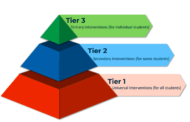BY Walaa Abadalla Fathallah (SCHS)
walaa.abadalla@schs.sharjah.ae
1. Introduction
Velo-cardio-facial syndrome (VCFS) is a genetic disorder caused by a microdeletion on chromosome 22 in the long arm. It is one of the most common genetic disorders, appearing in approximately 1 in 4,000 live births. Individuals have characteristic features, with palatopharyngeal changes, heart malformations, hypocalcemia, and immunological alterations. Reports of this syndrome date back to the middle of the 19th century, but the proposal and naming of the syndrome did not occur until the 1960s. VCFS has a high morbidity in the pediatric age group, primarily due to the risk of surgical approach to the larynx, high frequency of repeated infections, and chronic gastroesophageal reflux disease (GERD). The high frequency of GERD is due to changes in the lower esophageal sphincter’s tonus and morphological alterations. (Deshpande et al., 2024) (Kotcher et al., 2022).
When the symptoms of gastroesophageal reflux are abundant and persistent and cause complications for individuals, diet treatment is not always satisfactory. In many individuals, even with dietary treatment, other procedures are necessary, including medications that inhibit the etiological or surgical mechanisms that will correct the larynx, oropharynx, and septation. However, it is known that in isolated cases or when complications arise, additional procedures can be more incapacitating, even if they are modified in parallel. This is because this group often finds it difficult to cooperate with medical treatments, including multi-professional approaches. Therefore, researchers have proposed a study on the diet of children with Velocardiofacial Syndrome to verify the relationship between alimentation and the presence of GERD. We approached several themes to understand this proposition, including its introduction, the study’s objective, and the significance of this study for both the children with VCFS and researchers in the field. (Holty, 2020) (GOLDING-KUSHNER2020)
2. A Comprehensive Exploration of Velo-Cardio-Facial Syndrome (VCFS) and Its Implications
Velo-cardio-facial syndrome (VCFS), also known as 22q11.2 deletion syndrome, is the most common microdeletion syndrome in humans. A small interstitial hemizygous deletion, with many different-sized deletions and a high sequence identity of repetitive elements on either side of the deletion breakpoints, causes this autosomal dominant disorder. VCFS is linked to a number of birth defects, such as neonatal hypocalcemia, palatal anomalies, T-cell deficiency, learning disabilities, and a higher chance of developing autism and schizophrenia. Anomalies in teeth, craniofacial, and pharyngeal anatomy can occur and are associated with abnormalities in swallowing and feeding. These issues increase the risk of gastroesophageal reflux. On the other hand, severe reflux often leads to abnormalities in feeding. Control of heavy and persistent gastroesophageal reflux and support for dietary management are critical for maintaining health and development in patients with VCFS. (Reddy et al. 2020)
3. Gastroesophageal Reflux in VCFS Patients
The pattern of congenital anomalies that define this condition includes characteristic facies, cleft palate, conotruncal cardiac defects, and learning disabilities. Most deaths are due to cardiac and pulmonary complications. Patients with VCFS often have gastroesophageal reflux (GER). Gastroesophageal reflux (GER) or GER disease (GERD) may be a common problem in VCFS patients. However, the prevalence and severity have not been well defined. Postulations suggest that GER may influence pulmonary comorbidity in VCFS patients. This study investigated the prevalence of GER in VCFS patients as assessed by the scores using a validated pediatric GER disease questionnaire. This study also investigated the effect of dietary modification in the treatment of GER. Furthermore, we investigated how often physicians refer VCFS patients for surgical management of GERD. We developed two questionnaires to carry out this study. We designed the VCFS Patient Registry to survey primary care physicians and subspecialists on the number of VCFS patients they treat, the prevalence of GER, the evaluation and management of GER, and the recommendations for cardiovascular surgical evaluation. We also developed another questionnaire to identify potential factors associated with an increased prevalence of GER in the VCFS group. This questionnaire explored the feeding methods, dietary modifications used by the families, documented food regurgitation, chest infections, constipation, and the frequency of admission to the hospital. (Palchevska et al., 2021). (Rice et al. 2020)
3.1. Causes and Symptoms
Velo-Cardio-Facial Syndrome (VCFS) is a genetic disorder that results in a lack of development of the thymus and parathyroid glands in the anterior part of the neck. As many as 20-30 percent of all VCFS patients have an open cleft in the center of the soft palate. It’s likely that both the curling or warping of the eustachian tube and the weakening of the small muscles around the pharynx make it more likely for middle and external ear infections and fluid to build up in the middle ear after surgery. Over time, untreated ear infections can lead to hearing loss and significant developmental delays. More than 75 percent of VCFS patients experience impairments in their swallowing mechanism. Uncoordinated or weak swallowing can lead to impaired or weakened laryngeal contractions. This, in turn, can result in gastric contents moving into the esophagus, versus staying in the stomach. This backward flow of gastric contents into the esophagus, brought on by this condition, is known as gastroesophageal reflux. If the baby has frequent heartburn, pain and redness in the throat or mouth, or excessive coughing, gagging, opposing feeding, etc., it is the baby’s brain’s way of telling that something is wrong and needs attention. If symptoms are severe, consider having a stomach barium swallow, a pH probe, and/or gastroscopy performed. (Mustillo et al.2023)(Pashley et al., 2022)(Baqays, 2020)
3.2. Diagnosis and Management
Children with VCF syndrome should be screened for esophageal symptoms, including feeding difficulties, choking, regurgitation, hematemesis, recurrent pneumonia, biphasic stridor, and persistent cough. A thorough feeding history should be performed, notably regarding the degree, frequency, and timing of regurgitation, and whether these symptoms are associated with mealtimes, postprandial position, or recent worsening of respiratory symptoms. An upper gastrointestinal series should be performed with a barium swallow; indeed, as peculiarities of the VCF anatomy make the passage of a nasogastric tube very challenging, a barium swallow can be more convenient and less traumatic. An upper endoscopy with biopsies is also recommended if suspicion is present, in order to exclude or confirm eosinophilic esophagitis or Barrett’s esophagus. (HIGHCHAIRS, 2020)(Oskarsdottir et al.2023)
Integrated management demands that methods such as thickening via commercial thickeners, rice cereals, or the more recently introduced ultragelling alginates be utilized, as well as the incorporation of conventional proton pump inhibitors in an elective manner. More advanced strategies should be reserved for VCF patients who are non-responsive to these maneuvers, such as the use of alginates with relatively new and more effective technologies—such as the bioadhesive rafts containing hyaluronic acid and chondroitin sulfate and/or tamarind seed polysaccharide and calcium carbonate products, which completely coalesce and create thicker and more retentive rafts reflective of their improved bioadhesive template properties—or pH impedance monitoring tools. It is also noteworthy that the brain-gut axis should be evaluated for those patients whose clinical picture frequently eludes standard treatment. (Frangione et al.2022)(Starling, 2021)
4. The Role of Diet in Managing Gastroesophageal Reflux in VCFS Patients
One of the first steps in managing gastroesophageal reflux in VCFS patients is to decrease the volume of refluxed material and increase the stomach’s emptying rate. Both of these physiologic measures can be aided by modifying the diet. A registered dietitian working in concert with the VCFS team dietitian can provide detailed dietary instructions. Carefully spaced, smaller meals that contain fewer irritating foods can reduce gastroesophageal reflux episodes by approximately 50%. The flow rate and duration are also significantly reduced with half the pre-treatment volume of food consumption. Foods or drinks that provoke reflux should be avoided since they can loosen the lower esophageal sphincter muscle. Alcohol, caffeine, chocolate, tomato, and acidic or spicy foods can cause esophageal sphincter relaxation, induce functional decompensation of the esophageal musculature, and impair acid clearance. Of course, these trigger foods will differ between individuals due to their effect on LES pressure. Pre-packed, processed fast foods and large fatty meals are filling and can provoke gastroesophageal reflux as well. Decreased food consumption results in lower basal gastric volume and thus potentially decreased amounts of refluxed material. Some VCFS patients may be consuming their calories in premade shakes. Shakes, in liquid or nearly liquid form, can readily produce distension of the LES, potentially triggering episodes of acid reflux. Since 1981, patients and families adhere strictly to a VCFS diet regimen. The ultimate goal is to achieve symptom control and prevent disease progression. Although a valid treatment model, it’s a time-contingent regimen instead of adopting very strict schedules about meal times, daily routines, and levels of activity. Brushing teeth is a stimulant for reflux and should be done probably 90 to 120 minutes before lying down. It is probably an acute method to decrease the grade of gastroesophageal reflux in some (Some et al., 2021)(Some et al., 2022)(Shukla et al.2022)(Prakash et al.2022)patients.
4.1. Dietary Triggers and Recommendations
Many of the families were aware of general principles that helped their child avoid heartburn. They knew to avoid pizza, tomato sauce, high-acid fruits, soda, and favorite ‘expected’ items like French fries from fast food. However, our families continued to be frustrated with a lack of control over episodes of heartburn, despite already feeling like they were vigilantly restricting the diet. Several families avoided specific highly acidic fruits such as grapefruit, orange, tangerine, orange juice, and pineapple. Other fruits, such as apple, tended to create gas and act as a trigger. One family stated that yeast products, such as bread, should be avoided. Four families reported that hamburgers could initiate spitting, and four families stated that soda was a common offender no matter the flavor. Two families stated that pepper was a known trigger. One family believed that pizza was a trigger, and another felt that mustard was a trigger. (Saikia, 2023)(Uthman and Garba2023)(Lu et al.2023)
The patients also experienced heartburn after spicy foods, chocolate, mints, and coffee. For the vent house, it is reported that the factors include liquid milk and caffeine-containing products such as tea, coffee, and cola drinks. Peppermint may also increase the relaxation of the lower esophageal sphincter. The risky foodstuffs should be corn, nuts, soy, and wheat. If people find themselves suffering from constant symptoms of heartburn or reflux, they may want to take a closer look at their diet. There were many suggestions for dealing with heartburn. It could start with adjusting portion size and limiting greasy or spicy food. To prevent symptoms, one could also try tracking which foods seem to trigger symptoms in the individual. Some trigger foods vary from person to person. Research did find that parsley and lean meats may be associated with causing discomfort. (Özenoğlu et al., 2023)(Amerikanou et al.2023)(Chen et al.2023)
4.2. Nutritional Considerations
meals, and mealtimes within 3 hours of sleep are discouraged. Although one study placed blame for reflux at the Diet is another aspect relevant to the reflux disease process but also to the broad parameters of care for the patient. In general, for patients with persistent gastroesophageal reflux, standard dietary guidelines for treatment emphasize the exclusion of acidic foods and liquids, highly spiced foods, tomato products, citrus, fruit juices, caffeinated drinks, alcohol, and chocolate. Also, chewing gum, long postprandial recumbence, eating large high-fat “shoulders of the malnourished” without a plausible mechanism, another speculated that patients with inadequate weight gain may drink excessive volumes and/or consume a composition of feeding solutions that can be expected to lower the pH and poor the lipid content of gastroesophageal refluxate, respectively. (Hashash et al., 2024)(Lichtenstein et al.2021)
Although recommendations have been made for feeding infants and children with gastroesophageal reflux disease according to the pathophysiology of gastroesophageal reflux, available studies that evaluate alteration of the composition of meals and/or timing of meals in relation to nocturnal recumbency are performed mainly in GER patients with neurodevelopmental disabilities. According to available data in children with or without neurologic disabilities, a nutrient-enriched formula can enhance growth and bone reactions. While limited information is available for patients with Velo-Cardio-Facial Syndrome, these findings related to other groups with gastroesophageal reflux issues should be discussed. This information and other clinical presentations in patients with Velo-Cardio-Facial Syndrome (e.g., poor weight gain, picky appetite) should be considered when making recommendations for diet. Only with controlled, scientific studies can specific recommendations be made, initially for these patients and ultimately for the broader populations. (Holty, 2020)(Calcagni et al.2021)
5. Conclusion, Insights, and Future Research Directions
The information here explains how diet in individuals with VCF syndrome differs from the wider population and the reasons behind these differences. GOR plays a significant role in influencing food intake, portion sizes, meal consistency, and timing of ingestion. Differences in gut development and secretion of GI hormones contribute to the observed dietary differences. There is a lack of research on diet in individuals with VCF syndrome, and these findings can serve as a basis for future studies. Eyewitness evidence of GOR manifestations and symptoms in children with VCF syndrome is discussed, as well as future research directions. (Holty, 2020)(Bar et al.2023)
References:
Deshpande, A., Nguyen, M., & Goudy, S. L. (2024). Pierre-Robin Sequence/Cleft Palate-Related Airway Obstruction Seen in Neonates. Principles of Neonatology. [HTML]
Kotcher, R. E., Chait, D. B., Heckert, J. M., Crowley, T. B., Forde, K. A., Ahuja, N. K., … & Reynolds, J. C. (2022). Gastrointestinal features of 22q11. 2 deletion syndrome include chronic motility problems from childhood to adulthood. Journal of pediatric gastroenterology and nutrition, 75(2), e8-e14. nih.gov
Holty, M. K. K. (2020). Assisting Children with Velocardiofacial Syndrome Who Have Developmental Disabilities and Delays Associated with Speech, Communication, and Education. usd.edu
GOLDING-KUSHNER, K. A. R. E. N. (2020). Verbal communication includes both language and speech. It has been reported that a high percentage of children with velo-cardio-facial syndrome (VCFS) have problems affecting both speech and language. Communica-tion development in children with VCFS was reviewed by Golding-Kushner (2005), who summarized. Educating Children with Velo-Cardio-Facial Syndrome, 22q11. 2 Deletion Syndrome, and DiGeorge Syndrome, 1, 101. [HTML]
Reddy, P., Byun, Y. J., Downs, J., Nguyen, S. A., & White, D. R. (2020). Presentation and management of type 1 laryngeal clefts: A systematic review and meta-analysis. International Journal of Pediatric Otorhinolaryngology, 138, 110370. [HTML]
Palchevska, S., Gjurkova, B., Shukarova, E., Stavrikj, K., Jovanovska, J., & Aluloska, N. (2021). Dysphagia as an early presentation of Di George’s Syndrome-case report. Archives of Public Health, 13(1), 103-108. id-press.eu
Rice, G., Braden, M. N., & McMurray, J. S. (2020). Syndromes and Congenital Anomalies. Multidisciplinary Management of Pediatric Voice and Swallowing Disorders, 349-356. [HTML]
Mustillo, P. J., Sullivan, K. E., Chinn, I. K., Notarangelo, L. D., Haddad, E., Davies, E. G., … & Markert, M. L. (2023). Clinical practice guidelines for the immunological management of chromosome 22q11. 2 deletion syndrome and other defects in thymic development. Journal of Clinical Immunology, 43(2), 247-270. springer.com
Pashley, A., Young, A., & Wright, O. (2022). Foodservice systems and mealtime models in rehabilitation: Scoping review. Journal of Advanced Nursing. wiley.com
Baqays, A. A. (2020). Parent-reported outcomes tool for evaluating swallowing dysfunction in otherwise healthy infants and toddlers: Development and Validation. ualberta.ca
HIGHCHAIRS, I. S. (2020). Common Mealtime Seating Options for Children. Dysphagia-E-Book: Dysphagia-E-Book. [HTML]
Oskarsdottir, S., Boot, E., Crowley, T. B., Loo, J. C., Arganbright, J. M., Armando, M., … & McDonald-McGinn, D. M. (2023). Updated clinical practice recommendations for managing children with 22q11. 2 deletion syndrome. Genetics in Medicine, 25(3), 100338. sciencedirect.com
Frangione, E., Chung, M., Casalino, S., MacDonald, G., Chowdhary, S., Mighton, C., … & GENCOV Study Workgroup. (2022). Genome Reporting for Healthy Populations—Pipeline for Genomic Screening from the GENCOV COVID‐19 Study. Current Protocols, 2(10), e534. nih.gov
Starling, N. (2021). Markers predictive of response, resistance and relapse in colorectal cancer. icr.ac.uk
Some, S., Mondal, R., Mitra, D., Jain, D., Verma, D., & Das, S. (2021). Microbial pollution of water with special reference to coliform bacteria and their nexus with environment. Energy Nexus. sciencedirect.com
Some, S., Roy, J., Chatterjee, J. S., & Butt, M. H. (2022). Low demand mitigation options for achieving Sustainable Development Goals: Role of reduced food waste and sustainable dietary choice. Journal of Cleaner Production. [HTML]
Shukla, P. R., Skea, J., Slade, R., Al Khourdajie, A., Van Diemen, R., McCollum, D., … & Malley, J. (2022). Climate change 2022: Mitigation of climate change. Contribution of working group III to the sixth assessment report of the Intergovernmental Panel on Climate Change, 10, 9781009157926. [HTML]
Prakash, A., McGlade, K., Roxy, M. K., Roy, J., Some, S., & Rao, N. (2022). Climate adaptation interventions in coastal areas: A rapid review of social and gender dimensions. Frontiers in Climate, 4, 785212. frontiersin.org
Saikia, M. N. (2023). Dedicated to my beloved parents Dr. Anjan Saikia &. egranth.ac.in
Uthman, A., & Garba, Y. (2023). Citrus mineral nutrition and health benefits: a review. Citrus Research-Horticultural and Human Health Aspects. intechopen.com
Lu, X., Zhao, C., Shi, H., Liao, Y., Xu, F., Du, H., … & Zheng, J. (2023). Nutrients and bioactives in citrus fruits: Different citrus varieties, fruit parts, and growth stages. Critical Reviews in Food Science and Nutrition, 63(14), 2018-2041. [HTML]
Özenoğlu, A., Anul, N., & Özçelikçi, B. (2023). The relationship of gastroesophageal reflux with nutritional habits and mental disorders. Human Nutrition & Metabolism. sciencedirect.com
Amerikanou, C., Kleftaki, S. A., Valsamidou, E., Chroni, E., Biagki, T., Sigala, D., … & Kaliora, A. C. (2023). Food, dietary patterns, or is eating behavior to blame? Analyzing the nutritional aspects of functional dyspepsia. Nutrients, 15(6), 1544. mdpi.com
Chen, Y., Sun, X., Fan, W., Yu, J., Wang, P., Liu, D., … & Fang, X. (2023). Differences in Dietary and Lifestyle Triggers between Non-Erosive Reflux Disease and Reflux Esophagitis—A Multicenter Cross-Sectional Survey in China. Nutrients, 15(15), 3400. mdpi.com
Hashash, J. G., Elkins, J., Lewis, J. D., & Binion, D. G. (2024). AGA Clinical practice update on diet and nutritional therapies in patients with inflammatory bowel disease: expert review. Gastroenterology. gastrojournal.org
Lichtenstein, A. H., Appel, L. J., Vadiveloo, M., Hu, F. B., Kris-Etherton, P. M., Rebholz, C. M., … & American Heart Association Council on Lifestyle and Cardiometabolic Health; Council on Arteriosclerosis, Thrombosis and Vascular Biology; Council on Cardiovascular Radiology and Intervention; Council on Clinical Cardiology; and Stroke Council. (2021). 2021 dietary guidance to improve cardiovascular health: a scientific statement from the American Heart Association. Circulation, 144(23), e472-e487. ahajournals.org
Calcagni, G., Pugnaloni, F., Digilio, M. C., Unolt, M., Putotto, C., Niceta, M., … & Versacci, P. (2021). Cardiac defects and genetic syndromes: Old uncertainties and new insights. Genes, 12(7), 1047. mdpi.com
Bar, O., Ebenau, L., Weiner, K., Mintz, M., & Boles, R. G. (2023). Whole exome/genome sequencing in cyclic vomiting syndrome reveals multiple candidate genes, suggesting a model of elevated intracellular cations and mitochondrial dysfunction. Frontiers in Neurology, 14, 1151835. frontiersin.orgdifferent-sized
ولاء عبدالله فتح الله
فني مؤهل تمريض، حاصلة على درجة البكالوريوس من جامعة ولونغ غونغ في دبي. تتمتع بخبرة تمتد لست سنوات في تقديم الخدمات للأشخاص ذوي الإعاقة في مدينة الشارقة للخدمات الإنسانية.
خلال مسيرتها المهنية، عملت على تطوير المعايير التشغيلية للخطة التمريضية وتطبيقها بفعالية، مع التركيز على تحقيق الأهداف التمريضية التي تدعم احتياجات الأشخاص ذوي الإعاقة. كما تم تعيينها كمسؤولة عن صحة وسلامة الأفراد في مدينة الشارقة للخدمات الانسانية فرع الذيد، حيث قامت بتطوير الخطط اللازمة وتطبيق أعلى المعايير الصحية العالمية لضمان الصحة والسلامة.
إضافة إلى ذلك، شاركت في عدة مبادرات توعوية، من بينها مبادرة “يداً بيد”، التي تهدف إلى تعريف المجتمع بمهام مدينة الشارقة للخدمات الإنسانية، وخاصة مهام الممرضين. كما ساهمت في إعداد دليل التثقيف الصحي المخصص لذوي الإعاقة للعام الدراسي 2023-2024، مما يعكس التزامي العميق بتعزيز الوعي الصحي ودعم هذه الفئة المهمة في المجتمع.
























